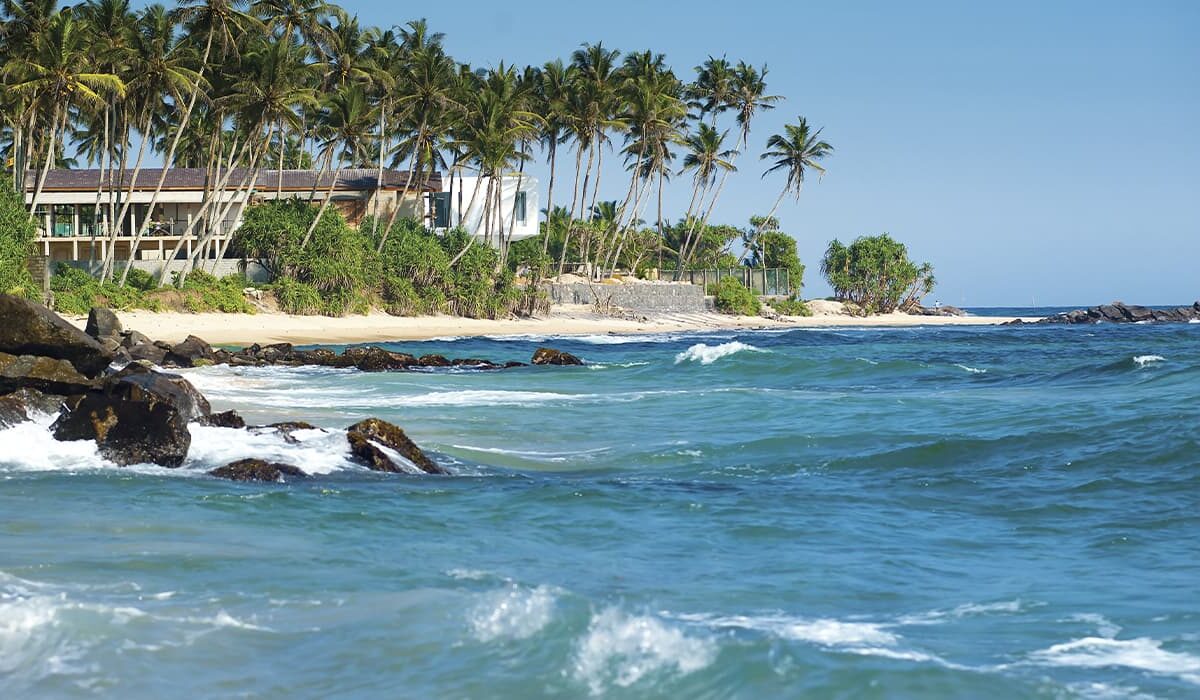In Sanskrit, “lanka” means “country, edge,” and the prefix “Sri” is added in South Asia to emphasize reverence. Thus the name of this exotic nation can be translated as “Blessed Land.
Before 1972, Sri Lanka was known as Ceylon and has long been famous for the world’s best tea and spices – cinnamon, cloves, curry, and cardamom. The islanders still honor tradition. Sinhalese people continue to grow the elite varieties of tea, cultivate rice paddies, mine by hand precious stones – sapphires, rubies, garnets and engage in traditional crafts, making wicker furniture and batik on cotton.
The blue of the ocean and sky, dense lianas and mangroves overgrown jungle, picturesque mountain waterfalls that gush down from high cliffs, lost cities and the ruins of Buddhist temples form a vivid palette of Sri Lankan landscapes. Trees abound with outlandish fruits, and elephants parade through the streets side by side with cars.
Sri Lanka has 21 national parks and numerous religious and historical monuments. In the heart of the island rises the rock fortress of Sigiriya (“Lion Mountain”) – the former residence of King Kasapa (V century AD), decorated with frescoes, which have not lost their lush colors. The historical city of Anuradhapura with its upward stupas and stone sculptures of Buddha is no less interesting to the guests of the island. The place of pilgrimage of tourists is the Bodhi Tree, grown from the offshoot of the sacred tree, meditating under which the Buddha attained enlightenment.
Other places of interest are Polonnaruwa, the medieval capital of the state, and the cave Buddhist temple of Dambulla (I century B.C.) with religious murals. In the city of Kandy, the Dalada Maligawa Temple holds the most precious relic of the island, the Buddha’s Tooth, hidden in seven gold chests. Only titled individuals like Queen Elizabeth of England can visit the “Hall of Pretty Views” – the sanctuary of the shrine. Once a year, in early August, there is the Esala Perahera Festival, during which a colorful procession passes through the night streets of Kandy led by an elephant carrying on his back the Buddha’s Tooth in a casket.
There are golden beaches and a magnificent Royal Botanical Gardens in the suburbs of Kandy, where birds sing melodiously, monkeys hop on the branches, and flying foxes fly over the tree tops. In the garden alone there are about 175 species of palms, orchids – over 100. Only when you get to the highlands of Nuwara Eliya, you forget that you are on a tropical island – the average temperature of the mountainous areas is 16 ° C, and at night it drops to 10 ° C. In this area, at an altitude of 2400-2800 meters grow tea plantations.
Sharp-roofed houses, an Anglican church, colonial-style mansions, and manicured green lawns create a British backwoods atmosphere. Nuwara Eliya Resort has a clubhouse with an 18-hole course and a racetrack that hosts horse races in April.

